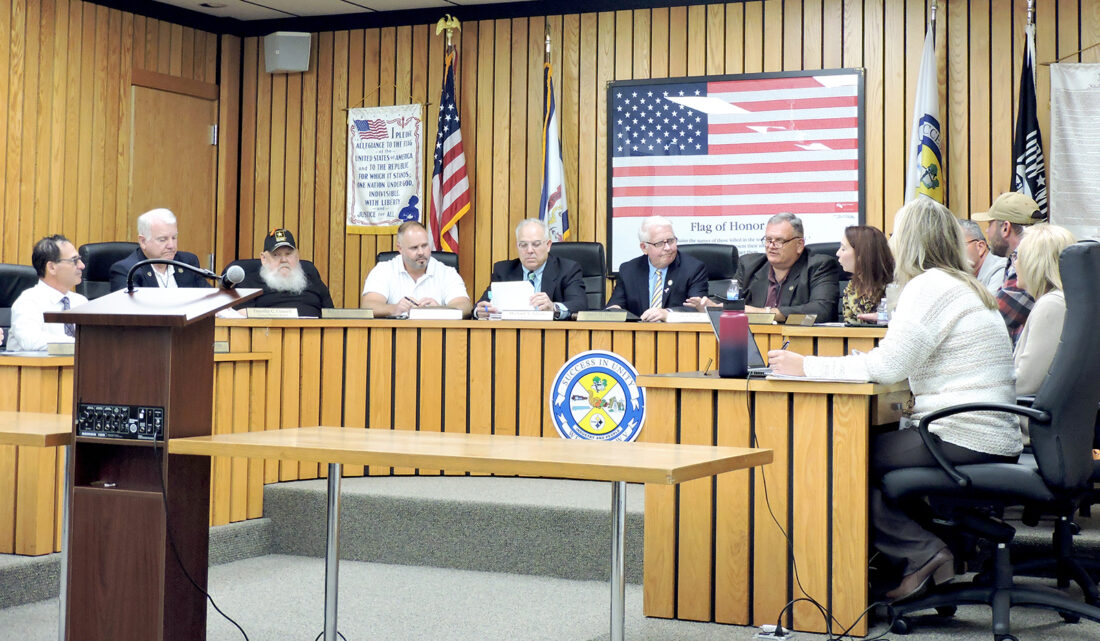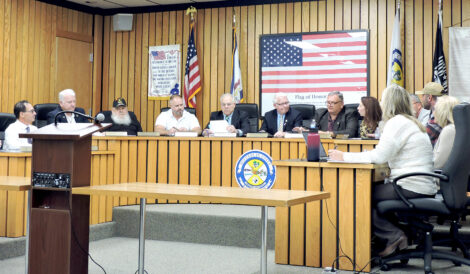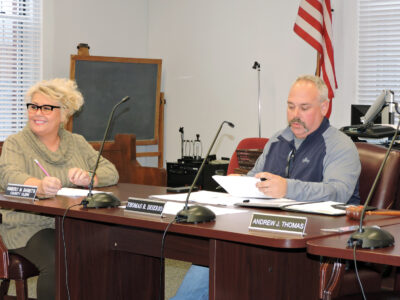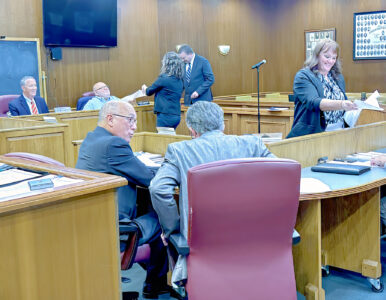Weirton salary ordinance moves forward at special council meeting

ANOTHER CHANCE – Weirton Council convened in a special session Tuesday, unanimously approving an ordinance to establish new pay scales for non-union city employees. -- Craig Howell
WEIRTON — One week after voting it down, Weirton Council unanimously approved the first reading of an ordinance designed to establish new pay scales for the non-union employees of the municipality.
Council met in a special meeting Tuesday, taking fewer than three minutes to cast a unanimous, roll-call vote in favor of the ordinance “establishing new minimum and maximum salary levels of specific non-union municipal employees within specific departments of the City of Weirton General Fund and adding/eliminating certain positions.”
Prior to the vote, Ward 1 Councilman Tim Connell requested to make a statement, apologizing to the employees affected by Ordinance 1313 for taking “so long” to address the issue.
Council began discussions on the potential pay raises while establishing the 2025-2026 fiscal budget, setting aside close to $460,000 to cover such expenses. Work sessions were then held May 27, July 30, and Sept. 24.
“A few of us on council didn’t like the method used,” Connell said.
To assist in establishing the new ranges, City Manager Mike Adams and Finance Director Diana Smoljanovich looked at pay ranges and the types of employee positions used by Wheeling and Steubenville, because of their proximity to Weirton, as well as Fairmont and Clarksburg, because of their comparable populations and budgets.
Despite those disagreements – which resulted in a 3-4 vote against the measure last week – Connell pledged to work with the city administration to establish a methodology for future pay adjustments.
“We agree to work for a better way,” he said. “We want to see you paid fairly.”
A second reading by council still must be held for the ordinance to go into effect.
Officials previously have noted that, while adjustments have been made to Ordinance 1313 over the years, not all positions were affected at the same time and increases were not necessarily uniform, resulting in some situations where pay rates were close for different-tiered positions. As an example, some foreman positions in Public Works were close to – and in some cases less than – a general laborer.
Council has, on numerous occasions, cited such pay situations as among reasons employees would leave their positions with the municipality.




